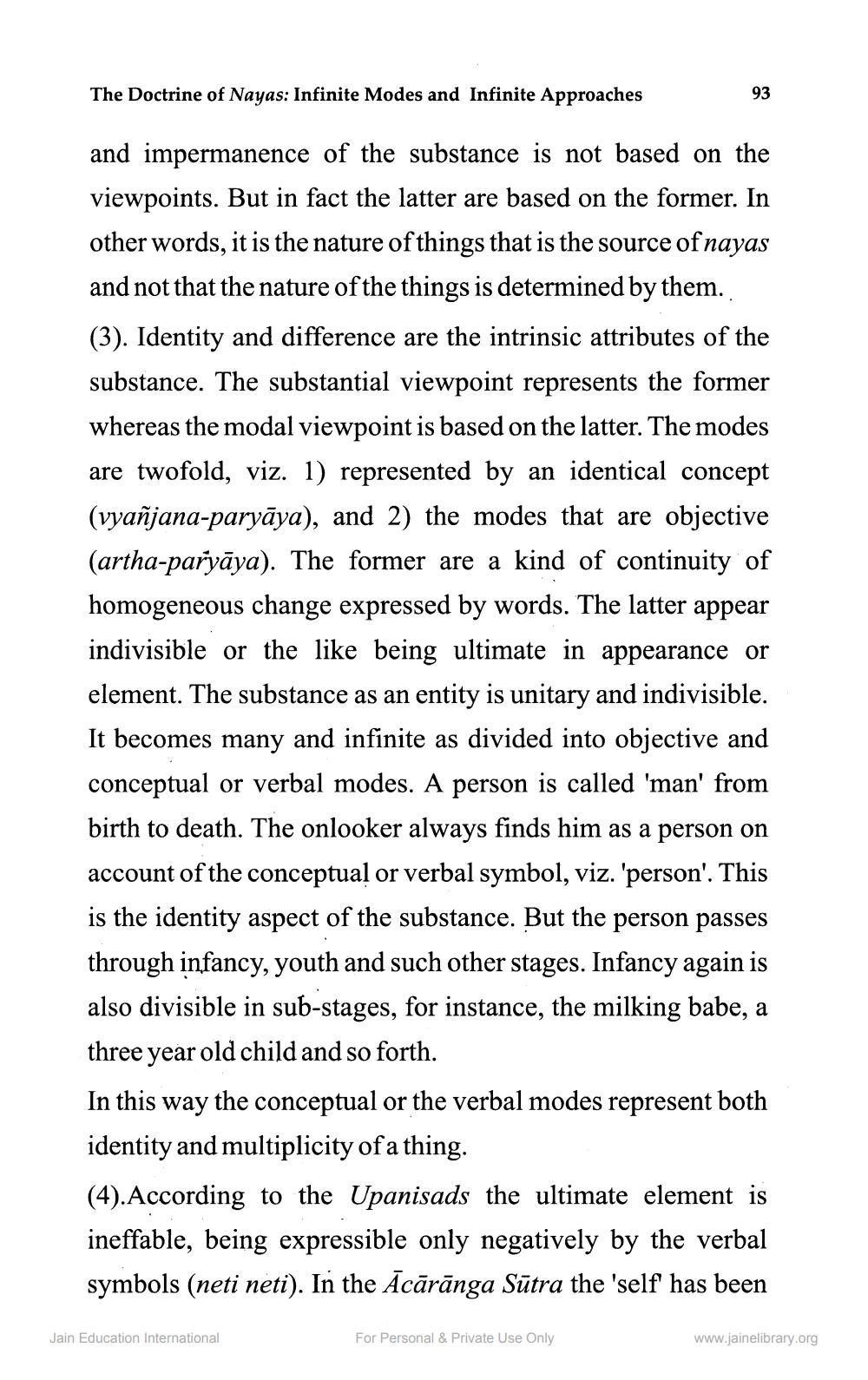________________
The Doctrine of Nayas: Infinite Modes and Infinite Approaches
93
and impermanence of the substance is not based on the viewpoints. But in fact the latter are based on the former. In other words, it is the nature of things that is the source of nayas and not that the nature of the things is determined by them. (3). Identity and difference are the intrinsic attributes of the substance. The substantial viewpoint represents the former whereas the modal viewpoint is based on the latter. The modes are twofold, viz. 1) represented by an identical concept (vyañjana-paryāya), and 2) the modes that are objective (artha-paryāya). The former are a kind of continuity of homogeneous change expressed by words. The latter appear indivisible or the like being ultimate in appearance or element. The substance as an entity is unitary and indivisible. It becomes many and infinite as divided into objective and conceptual or verbal modes. A person is called 'man' from birth to death. The onlooker always finds him as a person on account of the conceptual or verbal symbol, viz. 'person'. This is the identity aspect of the substance. But the person passes through infancy, youth and such other stages. Infancy again is also divisible in sub-stages, for instance, the milking babe, a three year old child and so forth. In this way the conceptual or the verbal modes represent both identity and multiplicity of a thing. (4). According to the Upanisads the ultimate element is ineffable, being expressible only negatively by the verbal symbols (neti neti). In the Ācārānga Sūtra the 'self has been
Jain Education International
For Personal & Private Use Only
www.jainelibrary.org




